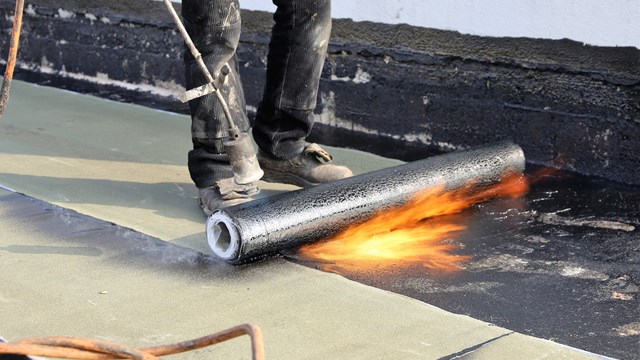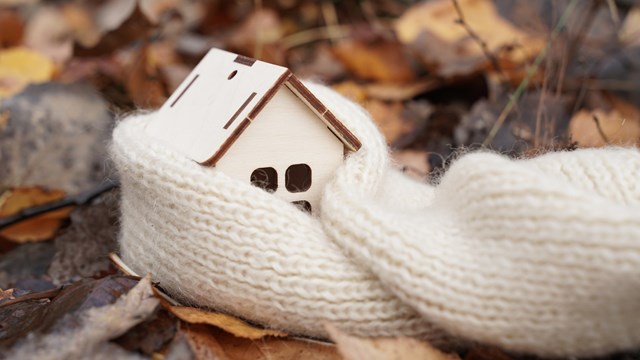A cold, wet spring turned quickly into a hot, humid summer rife with thunderstorms and localized flooding. As autumn starts to paint the region’s foliage, community association boards and managers are looking at long-range forecasts and, in their annual ritual, wondering what winter will hold this year.
Will conditions be just right for those nasty ice dams that wreak havoc on roofs and unit ceilings? Will a long, deep freeze put stress on heating systems and lead to burst pipes? Will mountains of snow and thaw-freeze cycles create slip-and-fall hazards throughout neighborhoods?
Whatever Mother Nature is getting ready to throw at New Jersey during the upcoming season, the time has come for associations to pull out their winterizing checklists and get busy on buttoning up their properties.
With winter on the way, we asked experienced community association professionals what items on are on their “to-do” lists—and should be on your community’s list, too.
Winter tends to sneak up quickly, and it’s all too easy to get caught by surprise by an early cold snap or snowstorm. With that in mind, Russ Fernandes, principal of New Jersey-based Becht Engineering, headquartered in Liberty Corner, says that early fall is the time to address a number of key outdoor topics.
Up on the Roof
Roof inspections should be part of any association’s routine. “An inspection of the roof shingles and flashings may indicate the need to perform spot repairs,” he says, noting that it’s “preferable to perform these small repairs before they can develop into larger, property damaging problems during severe weather.”
Roof areas that are prone to ice damming—the result of a combination of heat loss through the ceiling of the dwelling unit and inadequate attic ventilation—should be addressed. Under the right conditions, snow melting on a roof will re-freeze when it reaches the unheated eaves, creating a dam that will back water up, under the shingles and into the building. Buildings constructed without an ice shield along the lower portions of a sloped roof may require repair that includes removing some shingles and installation of the barrier to prevent damage from ice dams.
A building may not be experiencing leaks, but that doesn’t mean that problems don’t exist. Whether sloped shingle roofs on suburban communities or flat roofs on urban high-rises, all roofs have the potential to cause problems during fall hurricanes and winter snowstorms. A hole here, a rip there, and all kinds of havoc may be happening below, sight unseen. Water could be wetting down insulation, getting into wall cavities, causing rust and moisture problems inside the walls.
Attics should also be inspected to ensure that ventilation openings are clear of obstructions—and that dryers or bathroom exhaust fans aren’t venting into the attic space, Fernandes says, creating a moist environment that can lead to mold issues and even rotted wood framing.
On the roof, in plumbing systems, or under the ground, water can be a winter hazard for community associations.
Across the Northeast, the autumn months that precede winter’s cold blasts create their own danger to association properties. As tons of leaves flitter and flutter from the branches of deciduous trees, many will land on rooftops and, inevitably, in drains and gutters. Roof drains can get clogged with leaves and pine needles, preventing them from doing their job—sending water dripping into any available nook or cranny in the building envelope.
Evan Glaser, owner of Gutter Master in Jackson, says it’s essential to clean out gutters before fall rains and winter snows arrive. In addition to cleaning, gutters should be inspected to make sure they’re firmly attached and will be on the building, doing their job, when they’re needed the most. Because leaves continue to fall—and fill gutters—through the autumn, gutter cleaning is one of the later winter-preparation steps, he notes.
Lawn irrigation systems must be drained and the systems blown out with compressed air to remove any water left in low-lying piping runs. “Failure to perform this procedure could result in pipe bursts due to the expansion forces from freezing water,” Fernandes says. Swimming pools, like irrigation systems, require this type of fall service, he adds. “This is vitally important because the pipes often run beneath concrete, and the costs associated with their repair could be significant.”
Water inside buildings can also create problems as temperature drops. Insulation is not a substitute for proper servicing of water pipes in cold climes. “Adding extra insulation will only delay freezing, not prevent it,” Fernandes cautions. When cold weather hits, water sitting in pipes in unheated spaces like garage overhangs, building soffits, and band joist locations between floors will freeze. “Pipe freezing could also occur when the pipe is located between a heated occupied space and an unheated occupied space when the occupied space temperature setting is lowered for energy savings,” he says. Unit owners should make sure their thermostats are set to at least 55 degrees if they’re going to be away for any length of time.
Suburban townhomes or low-rise buildings may also have antifreeze-based fire suppression sprinkler systems running through attics—and, like automotive antifreeze, that liquid can lose strength over time. “That’s the kind of thing most people don’t think about, but it’s very important that it be checked,” he says.
Early fall is also the time for associations to make sure that fire hydrants and storm drains are marked so that snow plowing contractors and fire fighters can see their locations. Mid-October is also a good target date for having snow removal contracts in hand, along with an emergency plan that includes having extra help lined up if an unusually heavy snowstorm dumps unexpected levels of snow on the property.
Warm-Up Time
When temperatures drop, heating systems start their winter duty. Get them serviced now, to avoid unpleasant surprises later, advises James Kohler, owner of Divine Energy Solutions in Dover. Associations that haven’t yet had a professional energy audit should start their winter preparations with that step. “It will identify potential inefficiencies in the HVAC system, or inadequate insulation in the attic,” he says.
The audit will also include a health and safety check, looking for leaks in gas pipes and backdrafts in exhaust systems that could be harmful to residents. As part of the cleaning program, filters in heating systems should be checked twice a year, and changed if necessary—to improve both system efficiency and air quality. And many buildings with garages located under living spaces could benefit from increased insulation to improve comfort for residents in the cold weather that’s sure to arrive soon.
Buildings with 20- or 30-year-old heating systems may also want to weigh the cost of updating to a newer, more efficient system against the cost of keeping an inefficient one running. “You can gain 15 percent (efficiency) or more by replacing equipment,” Kohler says. With oil prices soaring, the investment could have a short payback period.
Landscape Maintenance
Peter Amato, owner of Amato’s Garden Center in Monmouth Junction, says it’s a good idea to prepare flowerbeds in the fall for spring blooming, and to add mulch to flowerbeds to shore up the “blanket” covering dormant plants and bulbs. A fall cleanup of leaves and debris around the property before Thanksgiving is also a plus; dry material in the fall is easier to clean up than wet material in the spring.
Amato advises against feeding perennial plants in the fall, because new growth stimulated by the fertilizer may not have time to “harden off” before winter. Lawns, on the other hand, can benefit from a little boost at this time. Amato recommends using a treatment plan in which lawns are fertilized five times per year. "When you winterize a lawn, you can use a fertilizer with root-building feeder. That should be done by mid-October," Amato says.
Landscape plants like arborvitae, which are susceptible to damage from deer or heavy snow loads, can be wrapped with burlap or a nylon mesh. While not terribly attractive, the wrap will both keep the branch structure from splitting, and prevent hungry animals—especially when a deep snow comes early in the season—from eyeing the plantings as a salad bar.
And before freezing temperatures hit, evergreens—especially broadleaf plants like rhododendrons, mountain laurel and PJMs—should be sprayed with an anti-desiccant to prevent winter burn and long-term damage.
From top to bottom, inside and outside, association properties need to be buttoned up before winter winds blow. Wise boards and managers will have those autumn checklists handy, and get started on winterization efforts soon.
Pat Gale is associate editor of New England Condominium, a Yale Robbins’ publication.







Leave a Comment